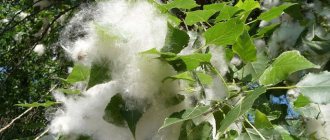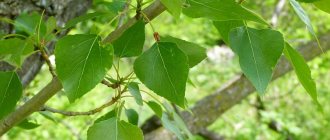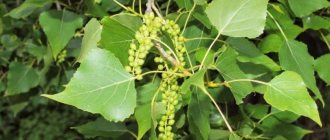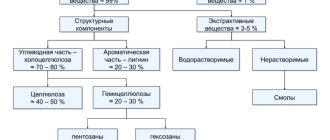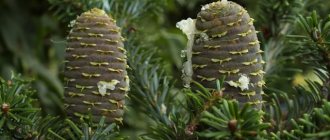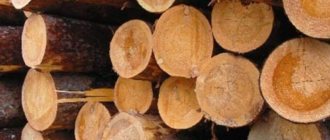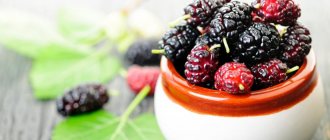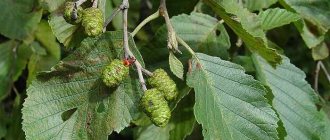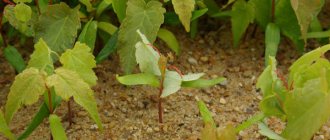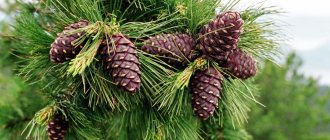Black poplar is a species of the Poplar genus, Willow family. Black poplar has a second name - sedge. The bark of the tree is light gray to dark gray. Dark bark is more likely to crack.
Black poplar grows throughout almost all of Europe, Siberia, Central and Lesser Asia, China, Kazakhstan, Iran, North Africa. In Russia it grows throughout the European part and Siberia.
Black poplar prefers chernozem soils and is light-loving. It can grow on any soil, but is very responsive to mineral fertilizers. Grows alone. Does not respond well to soil compaction, foot traffic or grazing. Osokor can be found along river valleys and lakes. Forms stands together with common poplar and willow.
Osokor is used for landscaping urban settlements, as well as for strengthening ravines, slopes, and banks. The use of black poplar in landscaping settlements is due to its frost resistance and rapid growth. Black poplar exhibits quite high dust and gas resistance in urban conditions.
Lumber
Description
Black poplar or sedge. Tree of the willow family up to 25 m high.
The bark of young branches is yellowish, eventually turning into dirty gray.
The crown is wide and spreading.
The root system is well developed, the roots penetrate deep into the ground and spread many meters wide.
The leaves are alternate, long-petiolate, almost triangular, serrated along the edge. The apical buds are pointed, layered, serrated. The tree is dioecious.
The flowers are small, without a pericarp, collected in inflorescences-catkins. Men's earrings are 6-10 cm long, women's - up to 12 cm.
The fruit is an ovoid, bare, greenish-brown capsule with small seeds.
It blooms in March - May before the leaves bloom. Ripens in April - June.
Spreading
Osokor is distributed in the European part of Russia, Western and Eastern Siberia and Central Asia.
It grows in floodplains of rivers, along the shores of lakes, on pebbles and sandbanks.
Useful properties of the plant
The buds, leaves, bark and flowers of black poplar have medicinal properties, such as:
- anti-inflammatory;
- analgesic;
- hepatoprotective;
- choleretic;
- cardiotonic;
- antipyretic;
- sedative;
- diaphoretic;
- wound healing;
- antispasmodic;
- antitumor;
- diuretic;
- hemostatic;
- bactericidal;
- metabolic;
- dulling feeling of hunger.
Black poplar Osokor Application
The wood is used to make containers, cooperage, matches, paper and artificial silk.
The bark is used for tanning and dyeing leather yellow, and fabrics yellow, chestnut, chocolate and brown.
The leaves and bark have phytoncidal properties. Apple and pear trees treated with an infusion of poplar leaves become more resistant to diseases during the growing season, and the fruits are less affected by pests and are better stored.
The leaves are used for tanning leather and dyeing fabrics yellow, as well as in the perfume industry to flavor toilet soaps, and are used fresh to feed livestock. They can be dried for the winter for cows and horses. It is a good honey plant. Bees use glue from their buds to produce propolis.
Use in landscape design
They are used for landscaping parks, gardens, streets and populated areas, rapid afforestation of steppe areas and strengthening ravines.
Medicinal use
Poplar preparations have anti-inflammatory, analgesic, antipruritic, astringent, antimicrobial, sedative, antipyretic, diaphoretic and wound-healing effects. Used internally as a tincture for intermittent fever, inflammation of the bladder, colds and scanty menstruation in women, in the form of an oil extract for urolithiasis , externally for poultices for damage to nerves and tendon ligaments, as an ointment for joint diseases, trichomonas colpitis, purulent wounds, burns, severe itching, cracked lips and nipples, for staphylococcal and fungal skin diseases. Fresh juice from poplar leaves relieves toothache. When there is ringing and noise in the head, it is instilled into the ear.
Collection and processing of medicinal raw materials
The medicinal raw materials are the buds, bark and leaves.
The buds are collected in the spring, from thin branches, before the leaves bloom, dried in a ventilated area and dried in the sun or in a dryer at a temperature of 35...40°C.
Bark is collected in early spring from felled trees or sawed branches when cultivating plantings
Osokor black poplar medicinal properties
Preparations from poplar buds have anti-inflammatory, analgesic, antirheumatic, antipruritic, astringent, antimicrobial, sedative, antipyretic, diaphoretic and wound-healing effects. Energy impact. Poplar takes away negative energy from a person and reduces irritability.
Application in official and folk medicine
In folk medicine, leaf buds are used, which are collected in the spring, during the period of sap flow.
Tincture of poplar buds, prepared with 40% alcohol in a ratio of 1:10, is used for tuberculosis, rheumatism, gout, intermittent fever, inflammation of the bladder, colds and scanty menstruation in women. Take it 20-30 drops 3-4 times a day with meals.
Kidneys boiled in vegetable oil in a ratio of 1:10 have an analgesic effect in case of urolithiasis. Take 1 teaspoon of oil 3 times a day with meals. An infusion of well-steamed fresh buds has a positive effect in cases of damage to nerves and tendon ligaments. To prepare it, pour 1/3 cup of raw material into 1 cup of boiling water and cover with a warm cloth. The drug is applied to the affected area. The dressing is changed every day.
Ointment from poplar buds is used externally for gout, joint disease, trichomonas colpitis, boils, purulent wounds, burns, hemorrhoids, severe itching, cracked lips and nipples, and staphylococcal and fungal skin diseases. To prepare it, 3 tablespoons of well-chopped kidneys are gradually mixed with 3 tablespoons of unsalted butter. Store in the refrigerator for 5-10 days.
To prepare an infusion of buds and leaves, pour 2 tablespoons of one or another crushed raw material into 1 glass of hot water, boil over low heat for 5 minutes, leave in a warm place for 1 hour and filter. Take 1-2 tablespoons 3-4 times a day with meals.
Fresh juice from poplar leaves relieves toothache. For ringing and noise in the head, 2-3 drops are instilled into each ear, warm. In this case, the auricle is slightly pulled towards itself.
The yield of essential oil from the kidneys is up to 0.7%.
Chemical composition
The beneficial and medicinal properties are determined by the components in the chemical composition of black poplar. The glycosides populin and salicin, flavonoids, malic and gallic acids, leukoanthocyanins, chalcones, essential (up to 0.7%) and fatty oils, carbohydrates, tannins, bitter resin, and gum were found in the kidneys. Vitamins include ascorbic acid.
Black poplar bark contains alkaloids, phenol glycosides, flavonoids, tannins, and higher hydrocarbons. The leaves contain isoprenoids, carotenoids, alkaloids, organic and phenolcarboxylic acids, phenol glycosides, lignins, and tannins.
Recipes for various diseases.
Bronchial asthma
Collection 1. Pour 2 teaspoons of crushed dry poplar buds with 1 glass of boiling water, leave for 4 hours under the lid, strain. Take 1 tablespoon 4 times a day.
Flu
Collection 1. Pour 20 g of dry black poplar buds with 1 glass of vodka, leave in a dark, warm place for 15 days, strain. Take 20-30 drops 3-4 times a day before meals.
Joint disease
Collection 1. Grind 2 tablespoons of dry or fresh poplar buds with 2 tablespoons of butter and rub into the affected joints.
Flatulence
Collection 1. Take charcoal from burnt poplar wood, 2-4 teaspoons per day before and after meals. It also helps with nausea.
Runny nose
Collection 1. Pour 10 g of crushed black poplar buds with 1 glass of boiling water. Leave for 15 minutes, strain. Drink 1/3 glass 3 times a day.
Polyarthritis
Collection 1. Pour 20 g of poplar buds with 1 glass of boiling water, leave for 2 hours, strain. Take 1 tablespoon 2-4 times a day. Can also be used externally.
Haemorrhoids
Collection 1. Pour 3 tablespoons of poplar buds with 4 glasses of water, boil under the lid for 5 minutes, leave for 4 hours. Strain into the bath. Take sitz baths.
Pyoderma
Collection 1. Pour 2 cups of crushed black poplar buds into 1/2 cup of vegetable oil, leave for 24 hours, then bring to a boil over low heat and cool. Lubricate the rash areas at night.
Gout
Collection 1. Mix powdered black poplar buds and Vaseline in a ratio of 1:4. Apply the ointment to the sore joint. Eases pain.
Contraindications
In order for the treatment to be effective and the results to last, before starting it, you should definitely take into account the benefits of black poplar and the harm that it can cause if used incorrectly.
The buds of the plant contain components that can irritate the gastrointestinal tract, kidneys and bladder, so when taking them internally, be sure to follow the recommended dosage. If the dosage is exceeded, nausea may occur.
Although black poplar preparations are recommended for treatment
- stomach,
- intestines,
- kidney,
however, if you have acute or chronic diseases of these organs, it is better to consult your doctor first.
You should also avoid taking black poplar internally during pregnancy. Individual intolerance to both internal and external use of plant preparations is possible.
Sources:
D.S. Ivashin, Z.F. Katina. Medicinal plants of Ukraine.
Advice from the traditional healer Evdokia. Herbalist, illustrated reference book.
Do it yourself. Supplement to the magazine "Ogonyok", No. 1, 1998.
I.N. Putyrsky, V. Prokhorov. Universal encyclopedia of medicinal plants.
V.V. Reshetnyak. Herbalist.
A.P. Popov. Medicinal plants in folk medicine.
What it looks like and where it grows
Black poplar (Populus nigra) is a tree up to 35 m tall from the Willow family. It has a powerful horizontal root system and a straight thick trunk up to 2 m in diameter. The poplar bark is yellowish when young and dark gray when mature, the leaves are diamond-shaped or oval-triangular, green, without pubescence.
Both male and female poplar catkins have healing properties.
The flowering of the tree begins in April-May simultaneously with the blossoming of the leaves. Male long inflorescences reach 9 cm in length and have numerous stamens with bright red anthers. Women's earrings are shorter, about 6 cm, and each can contain up to 40 small buds. Poplar fruits are bivalve dry capsules containing several seeds with long silky hairs.
Important! In nature, the spread of culture occurs due to the wind. The seeds are easily transported through the air over long distances.
Poplar grows everywhere in Europe and America, in Russia, in Asian countries and even in Africa. In the wild, it can usually be seen along the banks of water bodies, on sandy soils, and in deciduous forests. The tree is often used in urban landscaping and is planted in parks, along roads and on boulevards.
Use in folk medicine
Buds, leaves and other parts of black poplar help get rid of the symptoms of many diseases. Traditional medicine offers several proven algorithms.
For tuberculosis
The antibacterial and anti-inflammatory properties of black poplar help in the treatment of tuberculosis. Prepare the following healing decoction:
- three large spoons of kidneys are poured into 500 ml of hot water;
- Boil over low heat for seven minutes;
- cover with a lid and leave until completely cool;
- passed through folded gauze.
You need to take the product 50 ml up to three times a day. Therapy is continued for ten days, then the same break is taken and the course is repeated. A total of five treatment cycles are needed.
For cystitis
An infusion of poplar buds relieves inflammation of the genitourinary tract well. The medicine is done like this:
- dried raw materials are turned into fine powder;
- pour 250 ml of hot water into a thermos;
- kept closed for an hour;
- cool and pass through cheesecloth.
The finished poplar infusion should be divided into four equal portions and taken during the day on an empty stomach.
For gout
An ointment based on poplar buds relieves inflammation and joint pain due to gout, rheumatism and arthritis. Prepare a product for external application according to a simple recipe:
- dried buds are thoroughly crushed;
- 10 g of powder is mixed with 40 g of butter or fat;
- put in the refrigerator for several hours to harden.
Sore joints are treated with ointment several times a day. The beneficial substances contained in the drug penetrate the tissues through the skin and alleviate the condition.
For kidney diseases
Black poplar leaves and buds have diuretic properties. Based on them, the following infusion is made:
- pour five large spoons of dry raw materials with 1 liter of boiling water;
- cover the container with a lid and wrap it in a towel;
- kept closed for five hours;
- passed through a layer of gauze for filtration.
You need to take poplar infusion 100 ml three times a day on an empty stomach. In total, treatment is continued for two weeks, after which they pause for four days and, if necessary, repeat the course.
Important! Every week the infusion must be prepared anew, since it cannot be stored for a long time even in the refrigerator.
Collection and preparation
Poplar buds and bark are harvested in April at the very beginning of the tree's flowering, and the leaves are collected at the end of May and early June. The raw materials are sorted out, washed thoroughly in cold water, and then laid out in an even layer on a baking sheet or sheet of cardboard. You can dry the green parts and bark of poplar both in the air and indoors, as well as in the oven at a temperature of about 45 ° C.
Poplar buds should be dried away from direct sun so that the raw material is not exposed to ultraviolet radiation.
For the procurement of raw materials, it is very important to choose an environmentally friendly area. Buds and other parts of the plant should be collected only away from industrial facilities and highways, otherwise the poplar will not bring any benefit.
Dried raw materials are stored in paper bags or cardboard boxes in a dark place at room temperature. The green parts can be used for a year, and the bark for up to two years.
Attention! Black poplar leaf buds are collected for medicinal purposes. It is better to remove them from the side and young shoots, where almost no inflorescence ovaries are formed - this allows you to avoid mixing up the raw materials.
